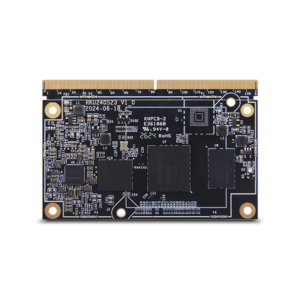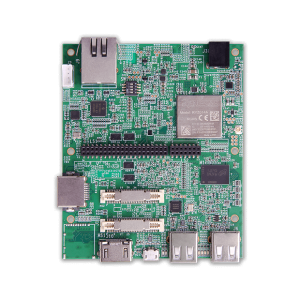Accelerating Product Development with Versatile Computer-on-Modules
Accelerating Product Development with Versatile Computer-on-Modules
Blog Article
Accelerating Product Development with Versatile Computer-on-Modules
In the present fast-paced technological landscape, corporations and designers are increasingly turning to modular alternatives to meet the ever-growing requirements of high-performance applications. One particular answer increasing footing is the usage of embedded computer module. These compact, self-contained methods are packed with all the essential the different parts of a pc, such as the model, storage, storage, and connectivity interfaces, all built-into an individual unit. In this information, we explore why Computer-on-Modules are learning to be a go-to choice for scalable, high-performance applications across various industries.

1. Small Design and Integration
Among the primary benefits of COMs is their small form factor. These adventures are designed to combine all important the different parts of some type of computer, lowering the necessity for multiple discrete components and making it easier to generate compact, space-efficient systems. This integration helps designers to construct strong answers without sacrificing the general size of the end item, which is specially beneficial in industries such as for instance stuck systems, IoT devices, and industrial automation.
2. Scalability for Diverse Programs
Scalability is an essential element for modern programs, particularly in sectors like telecommunications, automotive, and edge computing. With Computer-on-Modules, businesses can certainly scale up or down with respect to the particular performance and reference needs of their projects. For example, a company building an advantage computing option can start with a module that fits fundamental wants and then upgrade to stronger segments since the workload or handling demands grow. That versatility enables organizations to future-proof their opportunities and align hardware with developing efficiency demands.
3. High-Performance Research
Several high-performance programs require a powerful computational backbone to deal with demanding jobs such as for example real-time data processing, movie analytics, or device learning. COMs are usually designed with strong processors, high-speed interfaces, and sufficient storage, creating them effective at offering the large throughput and low-latency performance needed for these applications. More over, their capacity to aid the newest model architectures assures that systems can keep at the lead of performance benchmarks.
4. Cost Efficiency and Time Savings
Still another significant advantage of using Computer-on-Modules is charge efficiency. Since the segments come pre-integrated with important parts, developers save both time and sources that could otherwise be spent on designing, screening, and assembling individual components. This could cause reduced growth rounds and a faster time-to-market for products and services, which can be vital in aggressive industries. Moreover, considering that the equipment components are standardized, the risk of incompatibility is minimized, resulting in softer growth operations and lower engineering costs.
5. Variable Modification
While COMs offer a high amount of integration, they are also created for flexibility. Many COMs come with different choices for I/O interfaces, storage options, and power management answers, letting designers to tailor the module to the specific needs of these application. This flexibility is particularly useful in industries where customization is important, such as for example medical units, robotics, and automotive applications.

Conclusion
In conclusion, Computer-on-Modules provide numerous advantages for corporations and designers looking to create scalable, high-performance solutions. Their lightweight style, scalability, strong processing abilities, cost-efficiency, and modification choices make them a great choice for a wide selection of applications. As industries continue steadily to evolve and demand stronger, variable answers, COMs may certainly perform a crucial role in surrounding the continuing future of technology. Report this page